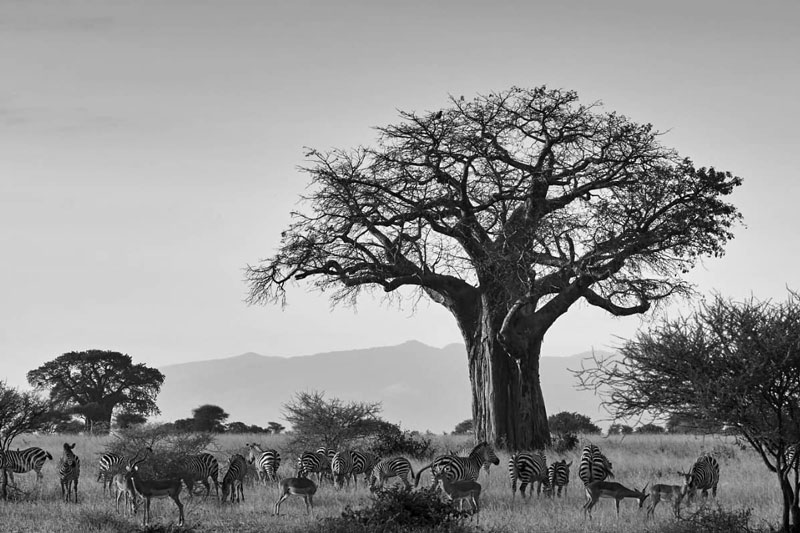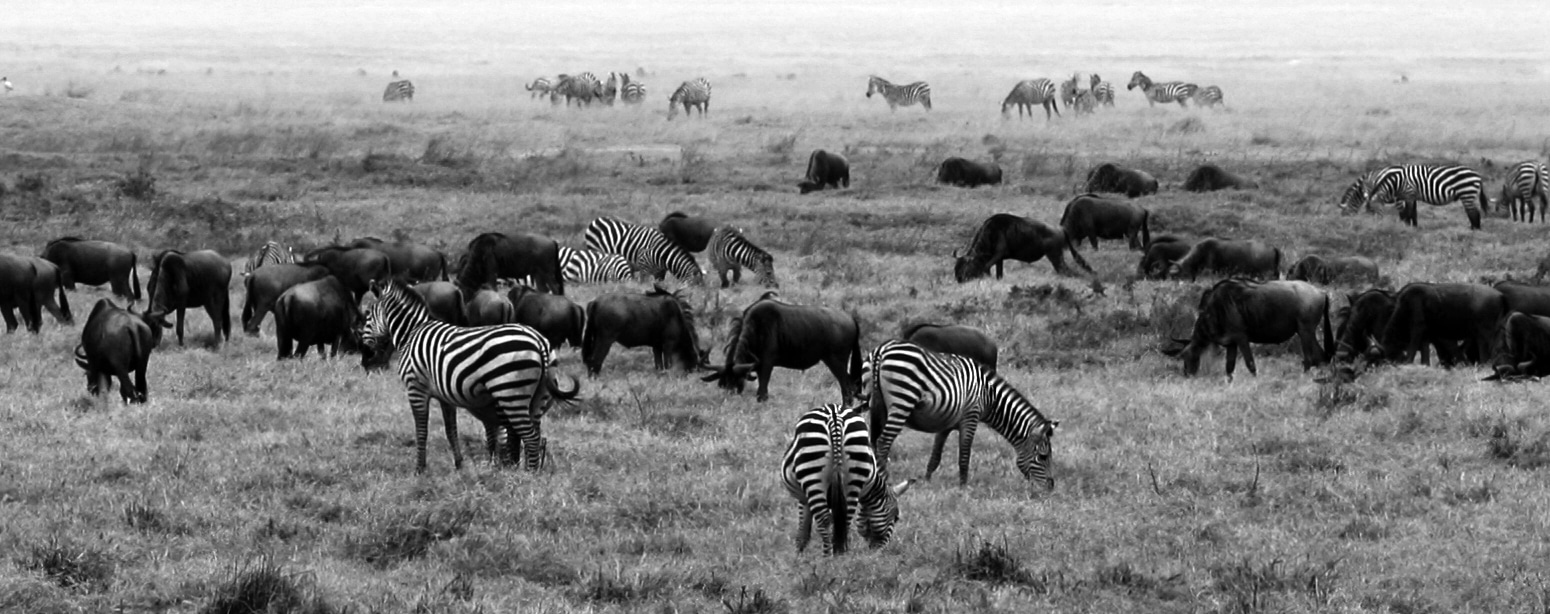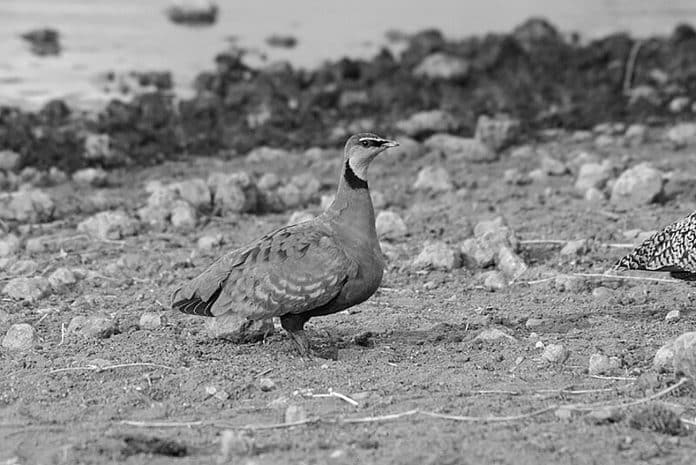Yellow-Throated Sandgrouse in Tanzania: Desert Nomads with a Splash of Color
Introduction to the Yellow-Throated Sandgrouse
The Yellow-Throated Sandgrouse in Tanzania (Pterocles gutturalis) is a fascinating bird species found in the country. With its vibrant yellow throat and intricate feather patterns, this bird stands out among its desert-dwelling counterparts. The sandgrouse is known for its nomadic lifestyle, adapted to survive in the harsh and arid regions of Tanzania. In this article, we will explore the natural habitat, physical characteristics, breeding behavior, feeding habits, threats, and conservation efforts related to the Yellow-Throated Sandgrouse in Tanzania. So, let’s dive into the world of this magnificent bird and discover the wonders it holds.
Natural Habitat and Distribution of the Yellow-Throated Sandgrouse in Tanzania

The Yellow-Throated Sandgrouse is primarily found in the sandy deserts and semi-arid regions of Tanzania. It prefers habitats with sparse vegetation, such as savannas and scrublands. This bird species can be spotted in various regions of Tanzania, including the Serengeti National Park, Ngorongoro Conservation Area, and Tarangire National Park. The sandgrouse is well-adapted to the harsh desert environment, with its plumage providing camouflage against the sandy backdrop.
Physical Characteristics and Adaptations of the Yellow-Throated Sandgrouse
The Yellow-Throated Sandgrouse is a medium-sized bird, measuring around 30 centimeters in length. It is characterized by its unique plumage, which features a sandy brown body with intricate black and white patterns. The most striking feature of this bird is its vibrant yellow throat, which gives it its name. The sandgrouse has a compact body with short, rounded wings and a small beak. Its legs are adapted for walking and running on sandy terrain.
The sandgrouse has several fascinating adaptations that enable it to survive in the desert. One of its notable adaptations is the ability to obtain water without needing a water source. This bird has specialized feathers on its belly that can absorb dew or water from wet vegetation, allowing it to stay hydrated. Additionally, the sandgrouse has modified feathers on its belly that act as insulation, protecting it from the extreme desert temperatures during the day and night.
Breeding and Mating Behavior of the Yellow-Throated Sandgrouse
The breeding and mating behavior of the Yellow-Throated Sandgrouse is an intricate process. During the breeding season, which typically occurs in the rainy season, males gather in groups called leks to attract females. The males display elaborate courtship behaviors, such as puffing up their plumage, making vocalizations, and performing aerial displays. The females observe these displays and choose a mate based on their attractiveness.
Once a pair is formed, the female sandgrouse lays her eggs in a shallow depression in the sand. Both the male and female take turns incubating the eggs, with the male incubating during the day and the female taking over at night. This shared incubation process helps to ensure the survival of the eggs in the extreme desert environment. After approximately three weeks, the eggs hatch, and the chicks are precocial, meaning they are able to walk and feed themselves shortly after hatching.
Feeding Habits and Diet of the Yellow-Throated Sandgrouse
The Yellow-Throated Sandgrouse primarily feeds on seeds and grains, making it a granivorous bird. Its diet consists of a variety of desert grasses, herbs, and shrubs. To obtain its food, the sandgrouse uses its small beak to pick up and crack open seeds. It often feeds in flocks, which allows for increased protection against predators. The sandgrouse has a unique adaptation in its digestive system that enables it to extract moisture from dry seeds, reducing its dependence on external water sources.
Threats and Conservation Efforts for the Yellow-Throated Sandgrouse
Although the Yellow-Throated Sandgrouse is not currently classified as a globally threatened species, it faces several threats in its natural habitat. The destruction of its habitat due to human activities, such as agriculture and infrastructure development, poses a significant risk to the sandgrouse population. Climate change and desertification also impact the availability of suitable habitats for this bird.
Conservation efforts are underway to protect the Yellow-Throated Sandgrouse and its habitat. Organizations are working to raise awareness about the importance of preserving the desert ecosystems and implementing sustainable land-use practices. Protected areas, such as national parks and conservation areas, play a crucial role in safeguarding the sandgrouse population. Additionally, research and monitoring programs are conducted to gather data on the sandgrouse’s population dynamics and behavior, aiding in its conservation.
Interesting Facts and Lesser-Known Information about the Yellow-Throated Sandgrouse
- The Yellow-Throated Sandgrouse can fly long distances in search of food and water, sometimes traveling up to 100 kilometers in a single day.
- Male sandgrouse often perform aerial acrobatics during courtship displays, showcasing their agility and attracting potential mates.
- The sandgrouse has a unique vocalization called a “purring” sound, which is produced by vibrating its throat feathers.
- Despite its desert habitat, the sandgrouse is not a desert bird. It relies on finding suitable habitats within the desert landscape to meet its specific needs.
- The sandgrouse’s ability to absorb water through its belly feathers is an adaptation that allows it to stay hydrated in the absence of water sources.
Recommended Birdwatching Locations in Tanzania to Spot the Yellow-Throated Sandgrouse

If you’re interested in spotting the Yellow-Throated Sandgrouse in Tanzania, there are several recommended birdwatching locations where you’re likely to encounter this beautiful bird. The Serengeti National Park, with its vast grasslands and diverse wildlife, offers ample opportunities for birdwatching. The Ngorongoro Conservation Area, known for its stunning crater and unique ecosystems, is another great spot to observe the sandgrouse. Tarangire National Park, with its baobab trees and seasonal swamps, is also worth a visit for birdwatchers.
When visiting these locations, it’s important to respect the natural environment and adhere to ethical birdwatching practices. Keep a safe distance from the birds to avoid causing unnecessary stress or disturbance. Binoculars and a field guide can be useful tools for identifying and observing the sandgrouse and other bird species in their natural habitats.
Photography Tips for Capturing Stunning Images of the Yellow-Throated Sandgrouse
Photographing the Yellow-Throated Sandgrouse can be a rewarding experience for wildlife photographers. Here are some tips to help you capture stunning images of this unique bird:
- Use a telephoto lens: A telephoto lens will allow you to capture close-up shots of the sandgrouse without disturbing its natural behavior.
- Pay attention to lighting: Take advantage of the golden hours of sunrise and sunset to capture warm and soft lighting that enhances the colors and textures of the sandgrouse’s plumage.
- Be patient and observant: Spend time observing the sandgrouse’s behavior and movements to anticipate interesting moments and capture them in your photographs.
- Focus on details: Zoom in on the intricate patterns and vibrant colors of the sandgrouse’s plumage to highlight its unique features.
- Experiment with composition: Try different angles, perspectives, and framing techniques to add visual interest to your photographs.
Remember to prioritize the welfare of the birds and their natural habitat while photographing them. Avoid disturbing their behavior or causing any harm during the process.
Appreciating the Beauty and Resilience of the Yellow-Throated Sandgrouse in Tanzania
The Yellow-Throated Sandgrouse is a true marvel of nature, adapted to survive in the harsh desert regions of Tanzania. Its vibrant yellow throat and intricate feather patterns make it a stunning sight to behold. By understanding the sandgrouse’s natural habitat, physical characteristics, breeding behavior, feeding habits, and conservation efforts, we can appreciate the beauty and resilience of this remarkable bird.
Whether you’re a bird enthusiast, a wildlife photographer, or simply someone who appreciates the wonders of nature, encountering the Yellow-Throated Sandgrouse in Tanzania is an experience that should not be missed. So, pack your binoculars, grab your camera, and embark on a journey to witness the desert nomads with a splash of color – the Yellow-Throated Sandgrouse.
For more articles related to Wildlife in Tanzania (Animals), click here!

































